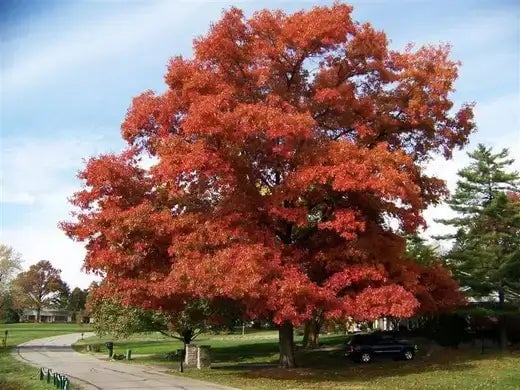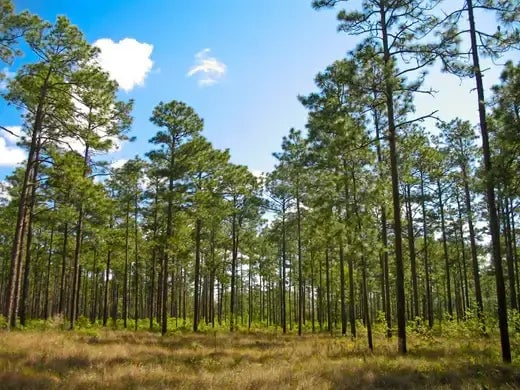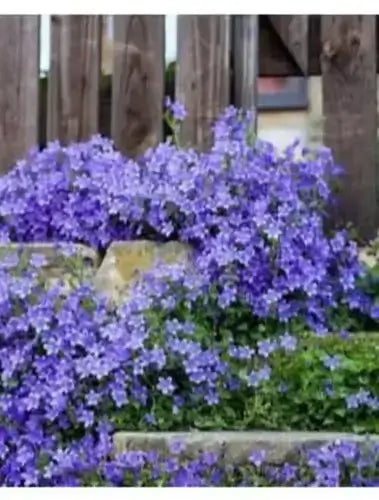10 Exceptional Shade Perennials to Enhance Your Garden
Shade gardening offers a unique opportunity to cultivate a tranquil and enchanting atmosphere in your outdoor space. While iconic shade perennials like Virginia Bluebells and Lily of the Valley have charmed garden enthusiasts for generations, there is a world of diverse and captivating options to explore.
This comprehensive guide will delve into ten extraordinary shade perennials that can add depth, color, and texture to your shaded garden areas. From vibrant blooms to elegant foliage, these plants promise to infuse your landscape with beauty and grace.
Bleeding Heart (Dicentra spectabilis): The Bleeding Heart is a perennial favorite for shade gardens, celebrated for its heart-shaped pendant flowers that dangle from arching stems. Blooming in shades of pink and white, this plant adds a touch of romance to shaded corners. It thrives in consistently moist, well-draining soil and can become the centerpiece of a charming woodland-themed garden.
Astilbe (Astilbe spp.): Astilbes are renowned for their feathery plumes of flowers that rise above fern-like foliage. These perennials are available in various colors, from soft pinks to rich purples, and they thrive in moisture-retentive soils. Their height and texture variations make them an excellent choice for layering in shaded borders.
Coral Bells (Heuchera spp.): Coral Bells are valued for their stunning foliage that ranges in color from deep purples and greens to vibrant oranges and reds. The delicate bell-shaped flowers that appear on tall stems add a touch of charm to the overall aesthetic. These plants can tolerate varying degrees of shade and can be used as ground covers or accents in shady spots.
Japanese Forest Grass: Japanese Forest Grass brings a touch of elegance to shaded areas with its gracefully arching blades of golden or variegated foliage. This low-growing grass forms beautiful cascading clumps, creating a soothing movement in the garden. Its sun and partial shade adaptability make it versatile for various garden designs.
Foamflower (Tiarella spp.): Foamflowers are known for their delicate, frothy flower spikes that emerge in shades of white, pink, or purple. The deeply cut, lobed foliage adds texture to shady borders, and these plants are particularly well-suited for woodland or naturalistic garden designs.
Hosta (Hosta spp.): Hosta's are among the most beloved shade perennials, prized for their diverse foliage colors, shapes, and sizes. From blue-greens to golds and variegated patterns, Hosta's offers endless possibilities for creative garden designs. Their robust nature and adaptability to shade make them reliable choices for shaded areas.
Jacob's Ladder (Polemonium caeruleum): Jacob's Ladder boasts elegant shades of blue, pink, or white. Its finely divided foliage adds a delicate touch to the garden. This perennial prefers moist, well-draining soil and can flourish in partial to full shade.
Ligularia (Ligularia spp.): Ligularias are recognized for their bold foliage and striking flower spikes that rise above the leaves. These plants create a focal point in shady landscapes with their large, kidney-shaped leaves and golden-yellow daisy-like flowers. They thrive in consistently moist soil.
Trillium (Trillium spp.): Trilliums are native woodland plants that produce exquisite, three-petaled flowers in various shades of white, pink, and red. These perennials often exhibit a captivating marbled foliage pattern, adding to their allure. Trilliums prefer well-draining soil in a shaded or dappled light environment.
Embrace the diversity of shade-loving perennials
These ten exceptional shade perennials we've explored – from the graceful Bleeding Heart to the vibrant Ligularia – offer a rich tapestry of colors, textures, and forms that can elevate the aesthetic of your shaded garden spaces. Whether you want to create a woodland oasis, a serene retreat, or a visually captivating border, these perennials are poised to inspire and transform your garden into a beautiful sanctuary. Embrace the diversity of shade-loving plants and embark on a journey of creativity, design, and botanical wonderment.
Shade-loving plants are an excellent addition to any garden or indoor space, adding depth, texture, and a calming atmosphere. These plants thrive in areas with limited direct sunlight, making them ideal for those shaded corners, under trees, or in spaces where natural light is scarce. Whether you have a shady yard, a balcony with filtered light, or a room with minimal windows, there are numerous pleasing shade-loving plants to choose from.
Ferns are classic shade-loving plants known for their delicate fronds and graceful presence. They come in various sizes and shapes, from the feathery Boston Fern to the bold and architectural Bird's Nest Fern.
Hostas are another popular choice for shade gardens. With striking foliage ranging from vibrant greens to deep blues, they offer a diverse palette. These perennials thrive in moist, shady conditions, bringing a lush and rich look to shaded areas.
For those seeking flowers in their shaded spaces, Astilbes are a fantastic option. Their plume-like flowers in shades of pink, white, and red add color to any shade garden. Astilbes prefer consistently moist soil and can brighten up even the darkest corners. If you're looking for ground cover, consider Ajuga or Lamium. These low-growing plants spread quickly and create a carpet of colorful foliage, helping to suppress weeds and add visual interest to the ground level.
Remember that shade-loving plants can tolerate lower light conditions.
Proper care, including watering, soil maintenance, and occasional fertilizing, will ensure your shade-loving plants remain pleasing and healthy year-round. By carefully selecting and placing these plants, you can transform dimly lit areas into beautiful, vibrant spaces that evoke a sense of tranquility and natural beauty.
Maximize Your Garden or Yard with Affordable Shade Perennials
Gardeners usually aspire to create brilliant flower beds with vivid leaves, yet they face difficulties finding suitable plants when working in shaded areas or under dappled light. A wide selection of shade-tolerant perennials flourish in dim lighting conditions, so you can create a unique garden without spending too much money. You can maximize your garden or yard potential by selecting and caring for the proper shade-tolerant perennials while minimizing expenses.
You must begin your research by determining the exact lighting conditions present in your area. Knowing your garden's light conditions, including full shade, partial shade, or filtered sunlight, will help you select thriving plants. Hostas, astilbes, and ferns are shade-loving perennials that thrive in low light conditions but require different moisture and soil conditions for best growth. When you understand your growing conditions beforehand, you can choose better plants, saving you from needless losses and money spent on plants that will not adapt.
Building your shade garden economically involves seeking out friends or neighbors who are splitting their perennials. Shade perennials usually develop spreading roots or cluster together, which requires dividing to manage their growth. Hostas can grow to substantial sizes, which makes splitting necessary to keep them healthy. To expand your plant collection economically, ask neighbors who trim their gardens if they have surplus plants to share. Exchange plants, cuttings, or gardening assistance with others. Through this method, you expand your plant options while building stronger connections within the gardening community.
When you choose perennials, purchase select species that demonstrate reliable growth and require minimal upkeep. Hostas exhibit countless leaf colors and textures, which make it simple to create contrast and depth in your garden. Ferns offer sophisticated, feather-like leaves that work well with modern garden designs and more traditional landscapes. Astilbes create soft flower plumes that brighten up shaded areas. The Lenten rose is another name for hellebores, which present their distinctive drooping flowers at the start of spring. Gardeners who want stunning plants without overspending will find these resilient options perfect.
Maximizing your garden involves more than just saving money on plants. Proper soil enhancement combined with attentive maintenance is crucial for successful gardening. Perennials establish themselves faster and stay strong when planted in healthy soil full of nutrients. Compost provides a cost-effective solution to enhance soil structure in regions with clay or sandy soils. Gather kitchen scraps, leaves, and grass clippings for homemade compost production, or search for local programs that supply inexpensive compost options. Organic mulch applied around shaded perennials preserves moisture and lowers root temperatures, which benefits plants in environments with limited sunlight.
Finally, don't overlook regular maintenance. Low-maintenance shade perennials still need periodic dead leaf pruning to maintain their health. By removing spent blooms, gardeners can stimulate plants to rebloom or enhance energy distribution toward healthy growth. By following this maintenance method, you prevent pest attacks and diseases and, therefore, avoid expensive treatment expenses. Active plant maintenance optimizes your initial investment by creating a lasting shade garden or yard that maintains its beauty throughout every year.
Using shade-tolerant perennials alongside garden collaboration and natural soil enhancement enables you to cultivate a stunning garden even in areas with limited sunlight. Brilliant selection and creative approaches allow the creation of low-cost, thriving gardens within shaded areas that offer lasting enjoyment.
Read more

The Advantages Of Planting Scarlet Red Maple TreesThere are a few advantages of planting scarlet red maple trees. The first advantage is that it will have a lot of colorful leaves, flowers, and fru...

The Yellow Pine tree can grow up to 100 feet or even a high 160 feet tall and 2 feet to 4 feet around. In some rare cases, the Yellow Pine tree has been found at least 180 feet tall.


